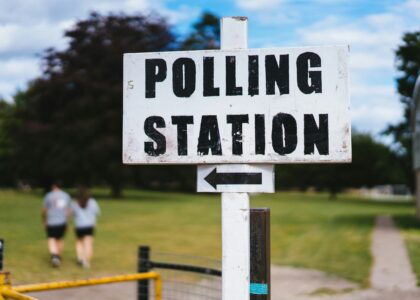Britain is about to go to the polls for the European Elections, but voter turnout in Britain is way behind that in Belgium and Luxembourg where voting is compulsory. History student Alice Donnelly argues that compulsory voting should be introduced for general elections in the UK, and that if this is successful, it should also be introduced for European elections.
Turnout in general elections in the United Kingdom (UK) have dramatically fallen since the 1990s and have remained worryingly low since. This has led to unequal levels of participation in elections with wealthy, highly educated and older people having substantially higher turnout than young, poor or less qualified people. This is not only a cause of distress in general elections, but also in local and European elections, where turnout is even lower.

There are three main reasons why low turnout should be of concern. Firstly,participation is essential for democracy, for it provides the consent which politicians need to legitimise their actions Secondly, when citizens do not participate, the outcomes of elections are questioned. Finally, it makes the operation of democracy unequal.
Political inequality is particularly worrying. The correlation between different social groups and level of turnout with wealthy, highly educated and older people having much higher levels of turnout than poor, less qualified and younger people. This is problematic because evidence suggests that politicians are more attentive and shape their policies to those that do vote in general elections.
Compulsory turnout
Most of the western democracies that adopted compulsory turnout were enacted in the early twentieth century. Australia, for example, adopted the measure for federal elections in 1924. The UK began to seriously debate compulsory turnout in the 1920s, with the first private member’s bill being in 1921. Since 1997 general election with the fall in turnout (and the worrying low figures ever since) compulsory turnout has become an issue of debate once again, with the latest private member’s bill being in 2013. The table below shows the arguments that are traditionally raised in favour or against compulsory voting.
The case for compulsory turnout is very strong. It should be adopted because it is a civic duty that should concern the whole electorate. Voting should not be confined to certain sections of society. If this continues, the dominant feeling of anti-politics and politicians will remain. Compulsory turnout effectively solves these worrying issues whilst also being a relatively cheap measure to implement.
| Arguments against compulsory turnout | Arguments for compulsory turnout |
|---|---|
| Compulsory turnout is not democratic because it infringes on citizens rights, electors have the right to vote and also not to vote. | Citizens’ duties are connected to rights. Citizens have a duty to perform in a democracy – to contribute equally in the collective decision making process through elections. In 1971, the European Court of Human Rights rued that compulsory turnout does not violate rights and freedom of thought conscience and religion. |
| Equating higher turnout with legitimacy is problematic, because: - It could indicate that people are content with the existing system. - Compulsory turnout leads to uninformed ‘donkey votes.’ | Compulsory turnout is effective in enhancing democratic legitimacy because: - It reflects the entire electorate. - The act of voting creates an awareness and interest in politics. - Compulsory turnout would create a positive change in the political landscape. Evidence suggests that it would create an environment for the more likely success of smaller political parties. This would benefit the political system. |
| Countries that implement enforced compulsory turnout have to use resources and money to determine whether those who did not vote had sufficient reasons for doing so. | Campaign spending is savedon trying to get the electorate to participate in elections. These resources are instead spent on policy formation and management. |
Implementation and Enforceability
In order to ensure that compulsory turnout is effective, it should also be accompanied with compulsory registration. Otherwise electors could decide not to register and would not be fined when they did not participate in general elections.

We would also need to ensure that large numbers of society co-operate with the new measure. A referendum on whether to introduce compulsory turnout would add legitimacy to the idea.
When compulsory turnout was enacted in Australia for federal elections in 1924, the measure was easily implemented. There was no mass public denunciation of the scheme and turnout rates immediately benefited. For example, in 1922 federal election turnout was less than 60% and in the first election compulsory turnout was enacted it rose to over 91%.
If the UK were to adopt compulsory turnout, it could be enforced in a similar way to Australia. All eligible citizens who are on the electoral register would be required to participate in general elections, unless they provide a valid reason for not doing so. If the citizen failed to do this, a minor fine should be issued, of about £10. This would increase on the amount of time the fine was not paid. If this continued, the citizen could be taken to court and be arrested.
Research suggests that 50% of the British public agree with compulsory turnout. Polls that are conducted within democracies that have established compulsory turnout suggest that the majority of citizens are happy with the measure, and would not want it abolished.
Alice Donnelly studied the module The Politics of Elections and Electoral Malpractice, run by Toby James.
Photo credit: wikipedia






An interesting and persuasive post on the thorny issue of compulsion in the electoral process. Evidence from Australia shows, though, that compulsion has done little to reverse the contempt in which very many Australians hold their elected representatives. Other evidence suggests that, in particular, the 18-24 age group in Australia harbour profound doubts about the efficacy of liberal democracy itself.